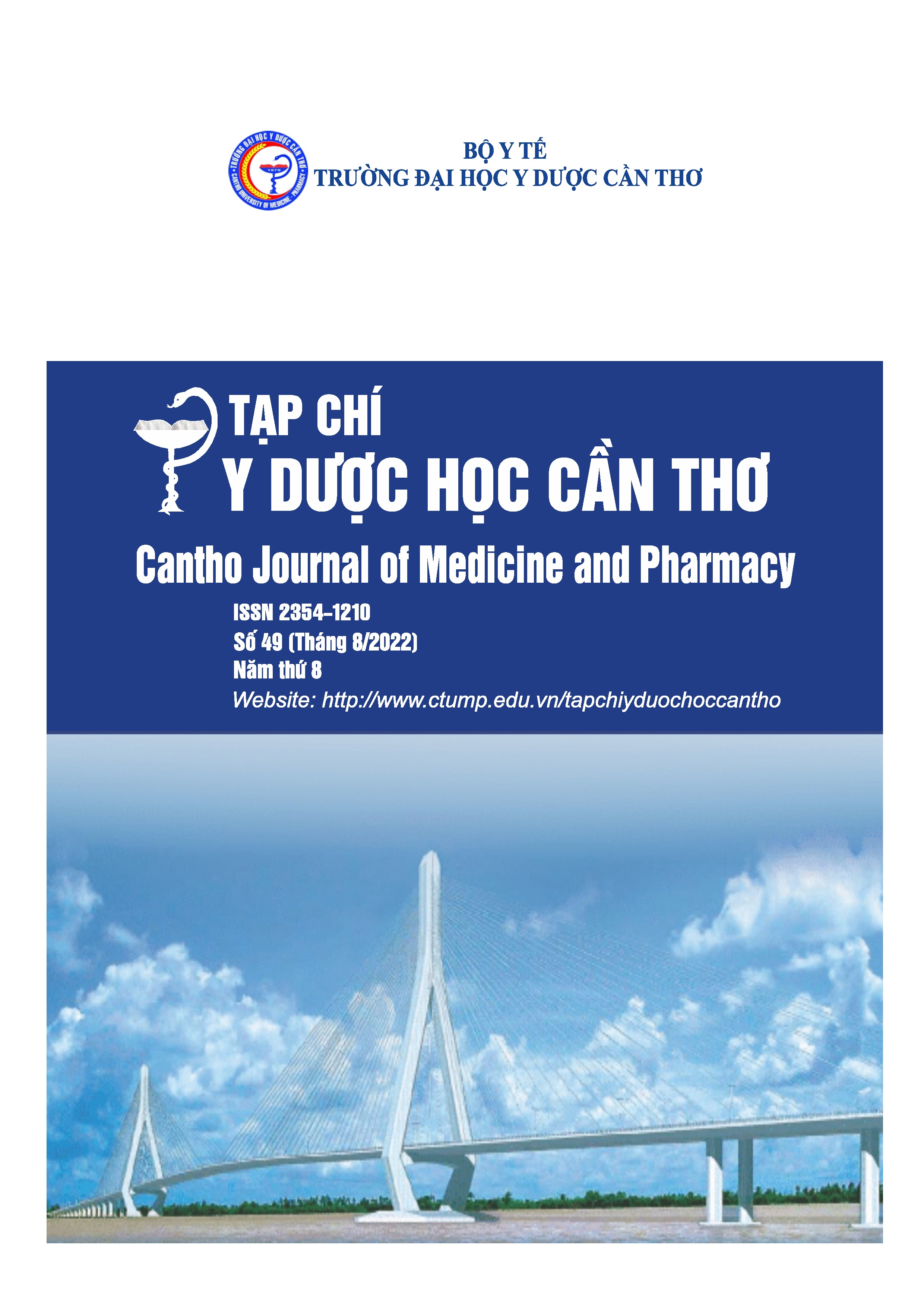THE CLINICAL AND PARACLINICAL FEATURES OF CLASS I MALOCCLUSION WITH NON-EXTRACTION ORTHODONTICS AT CAN THO UNIVERSITY OF MEDICINE AND PHARMACY HOSPITAL IN 2020-2022
Main Article Content
Abstract
Background: Malocclusion, especially Class I Angle, has been a common phenomenon of orthodontic patients, which impacts not only aesthetics but also the functionality. There is always debate whether teeth should be extracted or not. Objectives: To investigate the clinical and paraclinical features of Class I Angle malocclusion patients who received Non-extraction Orthodontics. Materials and methods: A cross-sectional descriptive study was conducted on 33 patients who were 15 years old or older with dental crowding less than 9mm, had Class I Angle malocclusion, and were indicated for Non-extraction Orthodontics at Can Tho University of Medicine and Pharmacy Hospital. Collected clinical characteristics, Peer Assessment Rating (PAR) index, and radiographic features. SPSS 20.0 software was used for data analysis. Results: The percentage of female patients was 75.8%, and the most popular chief complaint was related to aesthetics (72.7%). Most of the patients had a harmonious facial pattern. Analysis of dental models indicated that PAR was 14.45 ± 5.23, and the slight deviation accounted for 63.6%. In lateral cephalometric analysis, the patients had the maxillary and mandibular bones in regular positions, Class I skeletal malocclusion ANB 2.58 ± 2.02 (0), hypodivergent facial pattern SN-GoGn 29.31 ± 5.75 (0) (p < 0.05), protruded upper and lower incisor U1-SN: 25.42 ± 5.98 (0), 6.14 ± 2.16 (mm) và L1-NB: 27.47 ± 6.58 (0), 7.06 ± 2.67 (mm) (p < 0.05), proclined interincisor angle U1-L1 124.52 ± 9.21 (0) (p < 0.001). Protrusion of upper and lower lip compared to E-line was within the standard value. Conclusions: Aesthetics are getting more and more attention. Non-extraction Orthodontics should be indicated for patients with slight malocclusion, and a relatively harmonious facial pattern.
Article Details
Keywords
Malocclusion, Orthodontics, Non-extraction orthodontics
References
2. Nguyễn Mỹ Huyền (2018), “Nghiên cứu đặc điểm lâm sàng, cận lâm sàng và kết quả điều trị sai lệch khớp cắn loại I Angle ở sinh viên Răng Hàm Mặt trường Đại học Y Dược Cần Thơ”, Luận văn bác sĩ nội trú, Đại học Y Dược Cần Thơ.
3. Trương Thị Bích Ngân (2021), “Nghiên cứu đặc điểm lâm sàng, X-quang sai khớp cắn loại I
Angle và đánh giá hiệu quả gia tốc di chuyển răng nanh hàm trên có kết hợp huyết tương giàu tiểu cầu tại Bệnh viện Trường Đại học Y Dược Cần Thơ năm 2019-2021”, Luận văn bác sĩ nội trú, Đại học Y Dược Cần Thơ.
4. Nguyễn Thị Bích Ngọc (2015), “Nghiên cứu sự thay đổi hình thái mô cứng, mô mềm của khuôn mặt sau điều trị chỉnh răng lệch lạc khớp cắn Angle I, vẩu xương ổ răng hai hàm có nhổ răng”, Luận án tiến sĩ Y Học, Đại học Y Hà Nội.
5. Trần Tiểu Trang (2019), “Ảnh hưởng của quyết định nhổ răng trên sự thay đổi răng, xương, mô mềm ở người trưởng thành sai khớp cắn Angle I”, Luận văn Thạc sĩ, Trường Đại học Y Dược thành phố Hồ Chí Minh.
6. Lê Bích Vân (2011), “Đánh giá kết quả điều trị lệch lệch lạc khớp cắn loại I theo Angle bằng khí cụ cố định”, Luận án tiến sĩ Y Học, Học viện quân Y.
7. Aldosari M. N., Hammad Z. A. Al, et al. (2019), “Malocclusion in Saudi Arabia: A scoping review”, International Journal of Applied Dental Sciences, 5(1), pp.37-41.
8. Gudipaneni R. K., Aldahmeshi R. F. (2018), “The prevalence of malocclusion and the need for orthodontic treatment among adolescents in the northern border region of Saudi Arabia: an epidemiological study”, BMC Oral Health, 18, pp.16.
9. Konstantonis D. (2012), “The impact of extraction vs nonextraction treatment on soft tissue changes in Class I borderline malocclusions”, Angle Orthod, 82(2), pp.209-217.
10. Sundareswaran S., Kizhakool P. (2019), “Prevalence and gender distribution of malocclusion among 13-15-year-old adolescents of Kerala, South India”, Indian J Dent Res, 30(3), pp.455-461.
11. Tran Tuan Anh (2016), “Cephalometric norms for the Vietnamese population”, APOS Trends Orthod, 6(4), pp.200-204.


